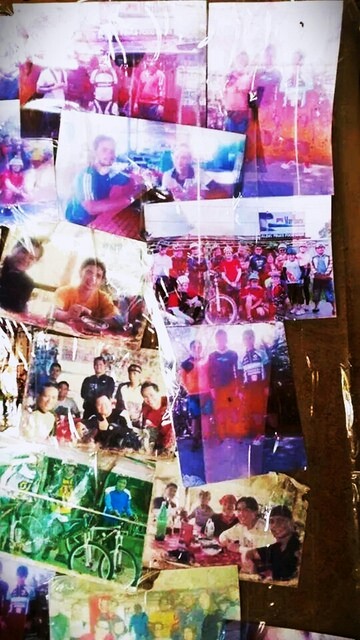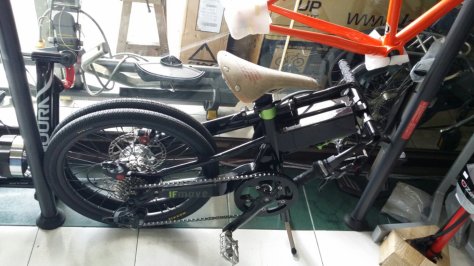All posts by Bikepacking Philippines
The Challenge, BGC Cycle Asia 2014
Today is the first day of registration for this year’s BGC Cycle Asia Event which will be held in Bonifacio Global City on November 21 to 23. I’ll be joining the Challenge ride on the last day of the event. It’s a 40 kilometer ride starting in BGC and will probably take us to some parts of Taguig, Makati and Roxas Boulevard in Manila. You can register online via this link: http://www.cyclephilippines.com.ph/bgc/
Here’s the table showing the cost to register and join the event.
| The Challenge | Early Bird | Regular Rate | Late | Ride Weekend |
|---|---|---|---|---|
| August 15 – 31 | Sep 1 – Oct 31 | Nov 1 – 20 | Nov 21 – 22 | |
| Individual | P1,800.00 | P2,100.00 | P2,300.00 | P2,500.00 |
| Student | P1,600.00 | P1,850.00 | P2,000.00 | P2,250.00 |
| Package 3+1 | P5,400.00 | P6,300.00 | P6,900.00 | P7,250.00 |
| Student Package 3+1 | P4,800.00 | P5,550.00 | P6,000.00 | P6,500.00 |
I’ll register with Alex, Marvin and Jorge so that we can get the 3+1 Package of Php5,400.00. Registration includes the bike jersey, timing chip, finisher’s medal and a Rudy Project sling bag. Not bad and definitely worth it if you ask me, (specially if you haven’t done this Challenge ride yet).
Our group photo in Aling P
Four reasons US business leaders want to import Danish-style cycling
From The Guardian:
At long last, cycling is being supported by American business – not out of environmentalism but because it’s delivering profit

Cities are driving the US economic recovery, and as they do, Americans are getting on their bikes. In 85 of the 100 largest metro areas cycling is increasing. All part of a deeply healthy – and profitable – reshaping of urban economies.
“Cities that invest in biking infrastructure are going to win,” predicts Jeff Judge, a Chicago-based digital marketing entrepreneur, who said the presence of on-street protected bike lanes was his number-one factor in assessing a city to locate in. “It’s better for business, planning, infrastructure. It’s better all round.”
After years of battling “the business community” for every inch of road space, many cycling advocates seem disoriented by the idea they might now be on the same side. But from Denver to Memphis, some of the loudest voices for a move toward Danish-style protected cycling infrastructure are those who sign the paychecks. In last month’s report (PDF) for US non-profit People For Bikes, which I co-authored with Mary Lauran Hall of the Alliance for Biking and Walking, we outlined four reasons why:
UFB on Tropang Pochi
In November last year, our group, the United Folding Bikers joined the annual Tour of the Fireflies. After the 20+ kilometer ride, we were interviewed by the staff of Tropang Pochi, a weekly TV show for kids on GMA. We talked about folding bikes and this is what the segment looked like. (special thanks to Retro Man for the youtube upload).
For the Love of God, Stop Wearing Your Bike Helmet the Wrong Way
From WIRED:

Many of us at WIRED ride bikes as a part of our daily commute, or for sport. So do a lot of other people in the Bay Area. And every few weeks (or sooner), we notice something: Someone is wearing their helmet wrong. Terribly wrong.
The numbers speak for themselves: helmets save lives. So if you’re going to venture forth into the world on two wheels, one of the most important things you need to do is make sure you’re wearing a helmet. But you also need to make sure it fits properly, which means you need to be wearing it the right way.
First, make sure the thing is not backwards. Yes, we regularly see folks on the street wearing their helmets the wrong way. While holding it level, with the straps pointed towards the ground, check which end has a higher rise. This is designed to accommodate your face so you can actually see where you’re going. This is the front of the helmet. Most higher-end helmets these days have features like knobs for adjusting fit, or even lights on the rear that make telling front from back pretty obvious. But for some cheaper helmets, it’s perhaps a little less obvious — if you’re putting them on in the dark with your eyes closed.
Next, the fit. If your helmet is too small or too large, it’s not going to protect you when you inevitably hit a pothole or skid on black ice and your noggin greets the pavement. If you’re buying a new helmet and can’t try it on in person, measure the circumference of your head to determine what size to buy. If you don’t have flexible measuring tape, use string or a cloth, then measure that distance against a ruler or stiff measuring tape. Another thing you’ll want to check: Whether the helmet is approved by the Consumer Product Safety Commission (CPSC). If it is, there will be a CPSC sticker somewhere inside.
Read More: http://www.wired.com/gadgetlab/2014/01/how-to-wear-a-bike-helmet/
DOTC exec wants less car, more bikes on EDSA
From GMA News Online:
Less cars, more bikes on EDSA.
This is the proposal of Transportation undersecretary Dante Lantin, as he noted that ongoing and scheduled road repairs in portions of EDSA, coupled with the increasing volume of vehicles in Metro Manila, will make the 23.8-kilometer thoroughfare more notorious for heavy traffic.
“On weekend naman ay carless day,” Lantin said in an interview with GMA News reporter Bam Alegre. “In that way makakatipid sa gasolina at makaka-contribute sa pag-improve ng environment, and we can encourage more bikers.”
Lantin conceded that his suggestion may appear “wild” to the public.
“Wild in the sense na baka ang initial reaction ng mga tao is masyadong marahas o masyadong mapusok,” he said.
Among the road construction and repairs expected to slow down vehicular traffic on EDSA are the Skyway Stage 3 project, which will connect South Luzon Expressway and North Luzon Expressway; the NAIA elevated expressway project; and the structural retrofitting of Magallanes interchange.
“Ire-retrofit natin itong buong ito, north and southbound ng Magallanes flyover. Papalitan ‘yung existing expansion joint, papalitan natin ng hindi slippery,” said Rey Tagudando, head of the Department of Public Works and Highways-National Capital Region.
Roel’s 70’s Canadian-Jap Touring Bike Sekine Black Panther.
Britain’s new cycling minister calls for more ‘everyday’ riders
From The Guardian:
Robert Goodwill wants more people to make shorter journeys in everyday clothes with a basket on their bike.

Britain needs more everyday cyclists, the sort who pedal a short distance in ordinary clothes with a basket on their bike, as opposed to a dedicated minority who speed along in Lycra, according to the new minister forcycling, Robert Goodwill.
The Tory MP, who took on the junior transport remit in October, himself often pedals around London on his Brompton folding bike in his suit, sometimes without a helmet. Goodwill said journeys such as his ride to the office from his London home, or from the Department for Transport to parliament, impressed on him a cycling culture that is by no means welcoming to all.
“As I turn left onto Millbank and the other lights change there’s just a pack, a peleton of Lycra that comes whizzing past,” he told the Guardian in his ministerial office, the Brompton folded away in a corner. “I can see that the basket-on-the-handlebars type cyclist is possibly as intimidated by the Lycra mob as they are by the cars and trucks.
“Therefore I want people to think cycling is for them, even if they are middle aged, or female, or overweight, or one of the other groups of people who don’t really get on their bikes. That’s the sort of cycling I think we’re missing out on to an extent: the sort of person who thinks cycling isn’t for them, when the fact is it could be for them.”






